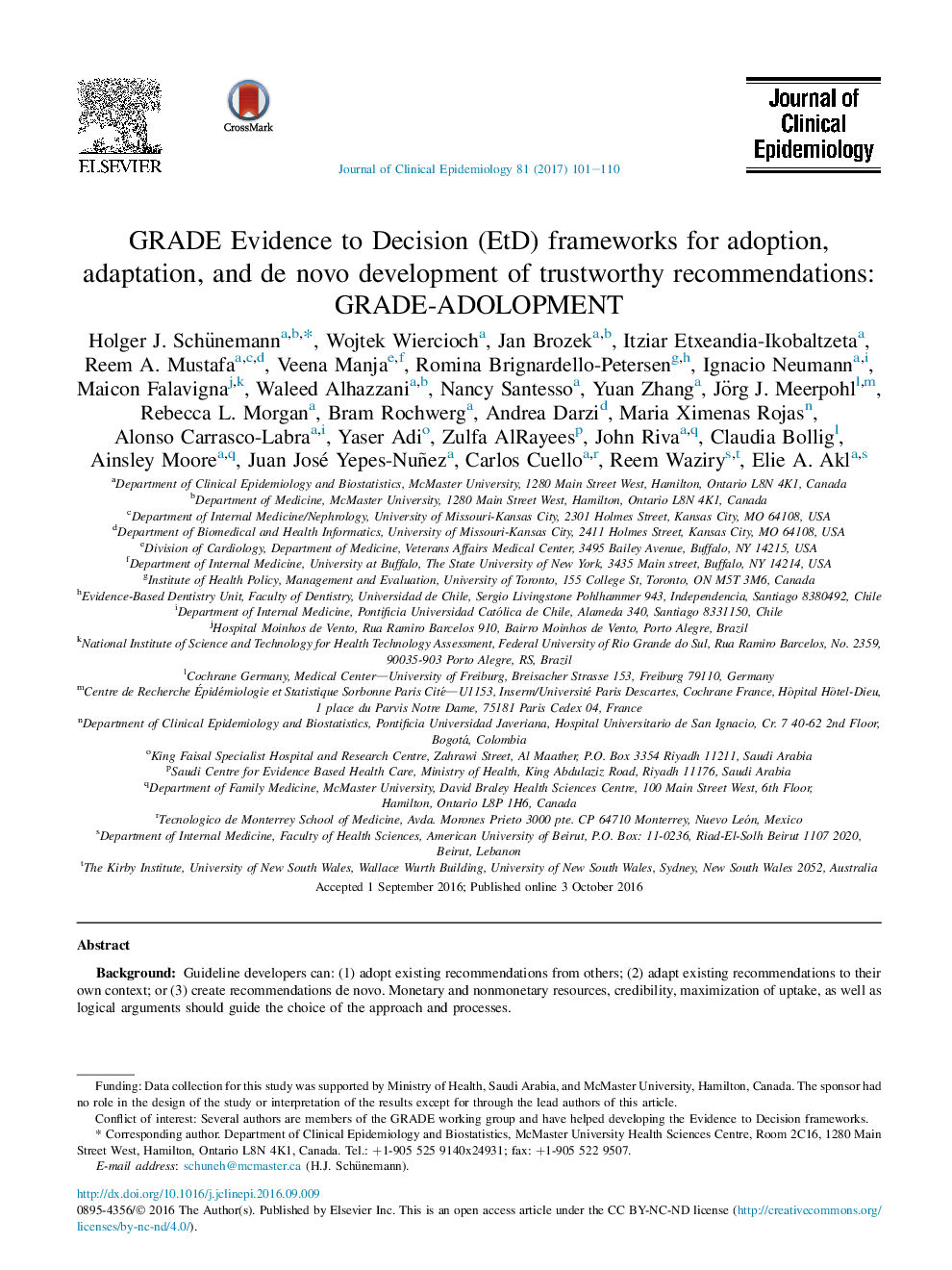| Article ID | Journal | Published Year | Pages | File Type |
|---|---|---|---|---|
| 5121855 | Journal of Clinical Epidemiology | 2017 | 10 Pages |
BackgroundGuideline developers can: (1) adopt existing recommendations from others; (2) adapt existing recommendations to their own context; or (3) create recommendations de novo. Monetary and nonmonetary resources, credibility, maximization of uptake, as well as logical arguments should guide the choice of the approach and processes.ObjectivesTo describe a potentially efficient model for guideline production based on adoption, adaptation, and/or de novo development of recommendations utilizing the Grading of Recommendations Assessment, Development and Evaluation (GRADE) Evidence to Decision (EtD) frameworks.Study Design and SettingWe applied the model in a new national guideline program producing 22 practice guidelines. We searched for relevant evidence that informs the direction and strength of a recommendation. We then produced GRADE EtDs for guideline panels to develop recommendations.ResultsWe produced a total of 80 EtD frameworks in approximately 4Â months and 146 EtDs in approximately 6Â months in two waves. Use of the EtD frameworks allowed panel members understand judgments of others about the criteria that bear on guideline recommendations and then make their own judgments about those criteria in a systematic approach.ConclusionThe “GRADE-ADOLOPMENT” approach to guideline production combines adoption, adaptation, and, as needed, de novo development of recommendations. If developers of guidelines follow EtD criteria more widely and make their work publically available, this approach should prove even more useful.
